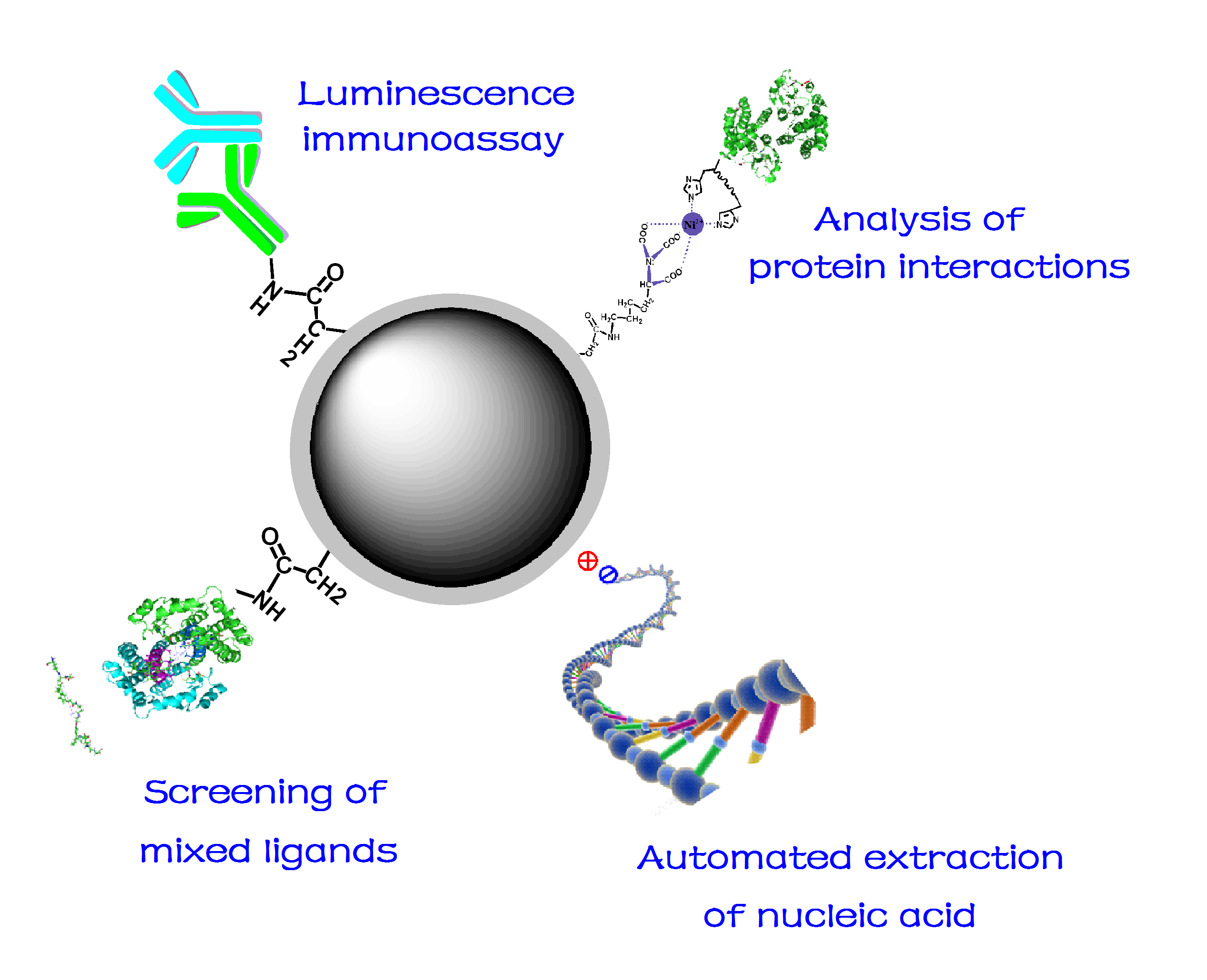

In life sciences, diverse immunoassays of trace quantities of biochemicals are pivotal techniques, and quantitative detection of nucleic acids are widely practiced. Reagent kits and equipments for such immunoassays and extraction of nucleic acids make a global market of hundreds of billions in total.
In practice, most immunoassays rely on the separation of immunocomplexes to quantify the labels. For favorable quantification precision and operation efficiency, magnetic separation of such immunocomplexes is the most favorable. In detail, paramagnetic submicron particles (MSP) are conjugated with capture proteins; the immunocomplexes on MSP surfaces are thus separated from liquid mixtures easily and rapidly through the exertion of an external magnetic field. Currently, MSP-based automated chemilluminescence immunoassays account for nearly 85% of the total immunoassay market, leading to a finely-defined market of about ten billions. Meanwhile, the adsorption and desorption of nucleic acids on such MSPs is a favorable technique to extract nucleic acids in biological samples for gene typing and quantitative analyses of pathogenic microbes.
In 1976, John Ugelstad successfully prepared submicron particles of uniform size. In 1982, the cooperation of Dyno with Pharmacia made MSPs commercialized as the series of Dynabeads Myone (https://www.thermofisher.com/cn/zh/home/brands/product-brand/dynal/the-history-of-dynabeads.html). Many other companies in later years also developed their own MSPs, promoting the practice of magnetic separation in immunoassays and extraction of nucleic acids. However, the series of MSPs as Dynobeads Myone predominate till now in the market over MSPs prepared by other companies.
MSPs for the extraction of nucleic acids should exhibit large binding capacity for nucleic acids at pH close to 4.3 and high efficacy to release the bound nucleic acids at pH close to 9.0. Till today, MSPs for the extraction of nucleic acids are coated with silane. Unfortunately, MSPs functionalized with silane exhibit lower capacity to bind nucleic acids and thus high cost for each extraction; such MSPs as Dynobeads Myone silane still predominate over all other products in market. On the other hand, in general, favorable MSPs for immunoassay should exhibit good structural stability, fast response rates to external magnetic fields, reasonable suspension stability, abundant accessible reactive groups, high dispersion rates of both the activated MSPs and their conjugates, high conjugation percentages of trace proteins, large capacity to conjugate proteins, high specific activities of the conjugated proteins and negligible nonspecific adsorption of proteins. Currently, carboxyl MSPs from Merk and Thermo-Fisher are widely employed due to their much larger conjugation capacity of antibodies/antigens; so, too, are the MSPs functionalized with streptavidin. However, systematic optimizations of the preparations of MSPs still can significantly improve the performance of the resulting hydrophilic MSPs in bioanalysis (patent application no. 201610963764.X in China and PCT/CN2017/082374).